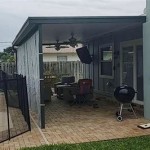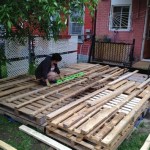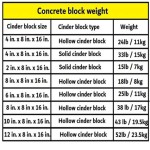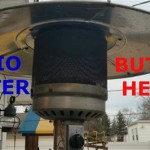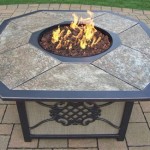Outdoor Patio Furniture Cushions Replacement: A Comprehensive Guide
Outdoor patio furniture cushions endure significant wear and tear from the elements. Sun exposure causes fading and material degradation; rain and humidity promote mold and mildew growth; and general use flattens fillings and weakens fabrics. Consequently, replacing outdoor patio furniture cushions is a common aspect of maintaining a comfortable and aesthetically pleasing outdoor living space. This article provides a detailed examination of the factors to consider when selecting replacement cushions, the various materials available, and the steps involved in ensuring a proper fit.
Evaluating the Need for Replacement
Before embarking on a cushion replacement project, a thorough assessment of the existing cushions is crucial. Consider the following indicators that replacement is necessary.
Fading and Discoloration: Prolonged exposure to ultraviolet (UV) radiation causes fabrics to lose their vibrant colors. Severe fading not only detracts from the visual appeal of the furniture but also indicates weakened fabric fibers. Even seemingly minor discoloration can be a sign of overall material degradation, especially if the original vibrant color is no longer visible.
Mold and Mildew Growth: Dampness and humidity create a conducive environment for mold and mildew. Visible spots, a musty odor, and a slimy texture are telltale signs. Mold and mildew can pose health risks and cause irreversible damage to the cushion materials. Regular cleaning can mitigate the risks, but persistent growth often necessitates replacement. The presence of mold and mildew can also accelerate the deterioration of the underlying foam, making replacement a health and safety concern.
Flattened or Compressed Filling: Over time, the filling material, whether it's foam, fiberfill, or a combination, compresses under repeated use. Flattened cushions lose their support and comfort, rendering the furniture less enjoyable. This compression also affects the overall appearance of the furniture, making it look worn and uninviting. Examine the cushions to identify any areas that do not return to their original shape after being compressed.
Tears, Rips, and Stains: Physical damage such as tears, rips, and persistent stains compromise the integrity and appearance of the cushions. Small tears can quickly expand, leading to further damage. Stains, especially those from oil-based substances or organic matter, can be difficult or impossible to remove completely, even with professional cleaning.
Deterioration of Fabric: The fabric itself might show signs of wear, such as fraying, thinning, or cracking. These issues indicate that the fabric has reached the end of its lifespan and will likely continue to deteriorate rapidly. A weakened fabric is less able to withstand the elements and the stresses of regular use.
Key Considerations When Selecting Replacement Cushions
Choosing the right replacement cushions involves careful consideration of several factors to ensure they meet both functional and aesthetic requirements.
Material Durability: Outdoor cushions must withstand harsh environmental conditions. Opt for fabrics specifically designed for outdoor use. Solution-dyed acrylic fabrics, such as Sunbrella, are highly resistant to fading, water damage, and mold. Polyester fabrics, particularly those with a UV-resistant coating, are a more budget-friendly option but may not offer the same level of longevity. Consider also the material's resistance to abrasion and tearing, especially if the furniture is used frequently.
Water Resistance: While completely waterproof cushions are rare and can trap moisture, water-resistant or water-repellent fabrics are essential. Look for fabrics treated with a durable water repellent (DWR) finish. This finish helps water bead up and roll off the fabric surface, preventing it from soaking into the filling. Check the DWR rating and reapply the treatment as needed to maintain its effectiveness. The filling should also be water-resistant or quick-drying to prevent mold and mildew growth.
Comfort and Support: Consider the type of filling used in the cushions. High-density foam provides firm support, ideal for seating areas where posture is important. Fiberfill offers a softer, more plush feel, suitable for lounging. Some cushions use a combination of foam and fiberfill to achieve a balance of comfort and support. Pay attention to the foam density rating, which indicates the foam's firmness and durability. Higher density foams offer more support and last longer.
Size and Fit: Accurate measurements are critical for ensuring a proper fit. Measure the existing cushions or the furniture frame to determine the required dimensions. Account for the thickness of the cushions as well as the length and width. If custom cushions are needed, provide precise measurements to the manufacturer. A poorly fitting cushion can look awkward and be uncomfortable. Consider whether rounded corners or custom shapes are necessary to match the existing furniture design.
Style and Aesthetics: Choose cushions that complement the style of the furniture and the overall outdoor décor. Consider the color, pattern, and texture of the fabric. Solid colors offer a classic, versatile look, while patterns can add visual interest. Ensure that the cushions coordinate with other outdoor accessories, such as rugs, pillows, and umbrellas. The style of the cushions should enhance the overall ambiance of the outdoor space.
Maintenance Requirements: Different fabrics have different cleaning and maintenance requirements. Solution-dyed acrylic fabrics are generally easy to clean with soap and water. Polyester fabrics may require more specialized cleaning products. Check the manufacturer's instructions for specific cleaning recommendations. Regular cleaning and maintenance will help prolong the lifespan of the cushions and keep them looking their best. Consider whether the cushion covers are removable and washable for easier cleaning.
Types of Cushion Materials and Fillings
The materials used in outdoor patio furniture cushions significantly impact their durability, comfort, and overall performance. Understanding the characteristics of different materials is essential for making an informed decision.
Fabrics:
Solution-Dyed Acrylic: This is a premium fabric known for its exceptional fade resistance, water repellency, and durability. The color is integrated into the fibers during manufacturing, making it highly resistant to fading from UV exposure. Solution-dyed acrylic fabrics are also resistant to mold, mildew, and stains. Sunbrella is a well-known brand of solution-dyed acrylic fabric.
Polyester: Polyester is a synthetic fabric that is more affordable than acrylic. It offers good water resistance and durability, especially when treated with a UV-resistant coating. However, polyester is more prone to fading than solution-dyed acrylic. Polyester fabrics also tend to be less breathable, which can make them less comfortable in hot weather. Look for polyester fabrics with a high thread count for increased durability.
Olefin: Olefin is a synthetic fiber that is naturally stain-resistant and fade-resistant. It is also relatively inexpensive, making it a good option for budget-conscious buyers. Olefin is less durable than acrylic and polyester, but it is still suitable for outdoor use, particularly in less demanding applications. Olefin is also lightweight and quick-drying.
Fillings:
Polyurethane Foam: Polyurethane foam is a common filling material for outdoor cushions. It provides good support and cushioning, but it can retain water if not properly treated. Look for open-cell foam, which allows for better air circulation and drainage. Applying a water-resistant spray to the foam can help prevent water absorption. The density of the foam affects its firmness and durability. Higher density foams are more durable and provide better support.
Fiberfill: Fiberfill is a synthetic filling material made from polyester fibers. It is soft, plush, and lightweight, making it ideal for creating comfortable cushions. Fiberfill is resistant to water and mold, but it can compress over time, reducing its support. Look for high-loft fiberfill, which maintains its shape better than standard fiberfill. Fiberfill cushions are often less expensive than foam cushions.
Dry Fast Foam: This is a specially designed foam that allows water to drain quickly. It is ideal for outdoor cushions that are frequently exposed to rain or moisture. Dry fast foam is also antimicrobial, which helps prevent mold and mildew growth. While more expensive than standard polyurethane foam, dry fast foam offers superior performance in wet conditions.
Ensuring a Proper Fit
Achieving a proper fit is essential for both the aesthetics and functionality of replacement cushions. This involves accurate measurements, understanding the furniture's design, and considering professional options when necessary.
Accurate Measurements: Using a flexible measuring tape, measure the length, width, and thickness of the existing cushions. If the old cushions are no longer available, measure the interior dimensions of the furniture frame where the cushions will sit. Ensure the measurements are precise and note any curves or angles. When ordering custom cushions, double-check the measurements with the manufacturer to avoid errors.
Understanding Furniture Design: Some patio furniture has unique designs that require custom-shaped cushions. Note any rounded corners, angled backs, or unusual contours. Consider whether the cushions need to be tapered or have specific cutouts to fit the furniture frame properly. If the furniture has a complex design, consider providing detailed sketches or photographs to the cushion manufacturer.
Custom Cushion Options: If standard-sized cushions do not fit the furniture, custom cushions are the best option. Many companies specialize in creating custom outdoor cushions to exact specifications. This allows for a perfect fit and the ability to choose from a wide range of fabrics and fillings. While custom cushions are more expensive than standard cushions, they offer superior fit and personalization.
Professional Assistance: If unsure about measuring or selecting the right cushions, consult with a professional. Upholsterers and furniture retailers can provide expert advice and assistance. They can also help with installation and ensure that the cushions fit properly and securely. Hiring a professional can be particularly beneficial for complex furniture designs or when replacing cushions for valuable or antique pieces.
By carefully considering these factors, individuals can confidently select and install replacement cushions that enhance the comfort, durability, and aesthetic appeal of their outdoor patio furniture.

Custom Outdoor Patio Furniture Replacement Cushion Covers With Singapore

Sunbrella Replacement Cushions Recommended

Outdoor Cushions Patio Furniture The Home Depot

Outdoor Replacement Cushions Patio Pottery Barn

Sunbrella Replacement Cushions Recommended

Water Resistant Rattan Patio Furniture Sofa Replacement Cushion Seat Or Back Pad

Outdoor Replacement Cushions Patio Pottery Barn

Elevate Comfort And Style Replacement Cushions For Wicker Deep Seating Chair

Sunbrella Replacement Cushions Recommended
Related Posts

